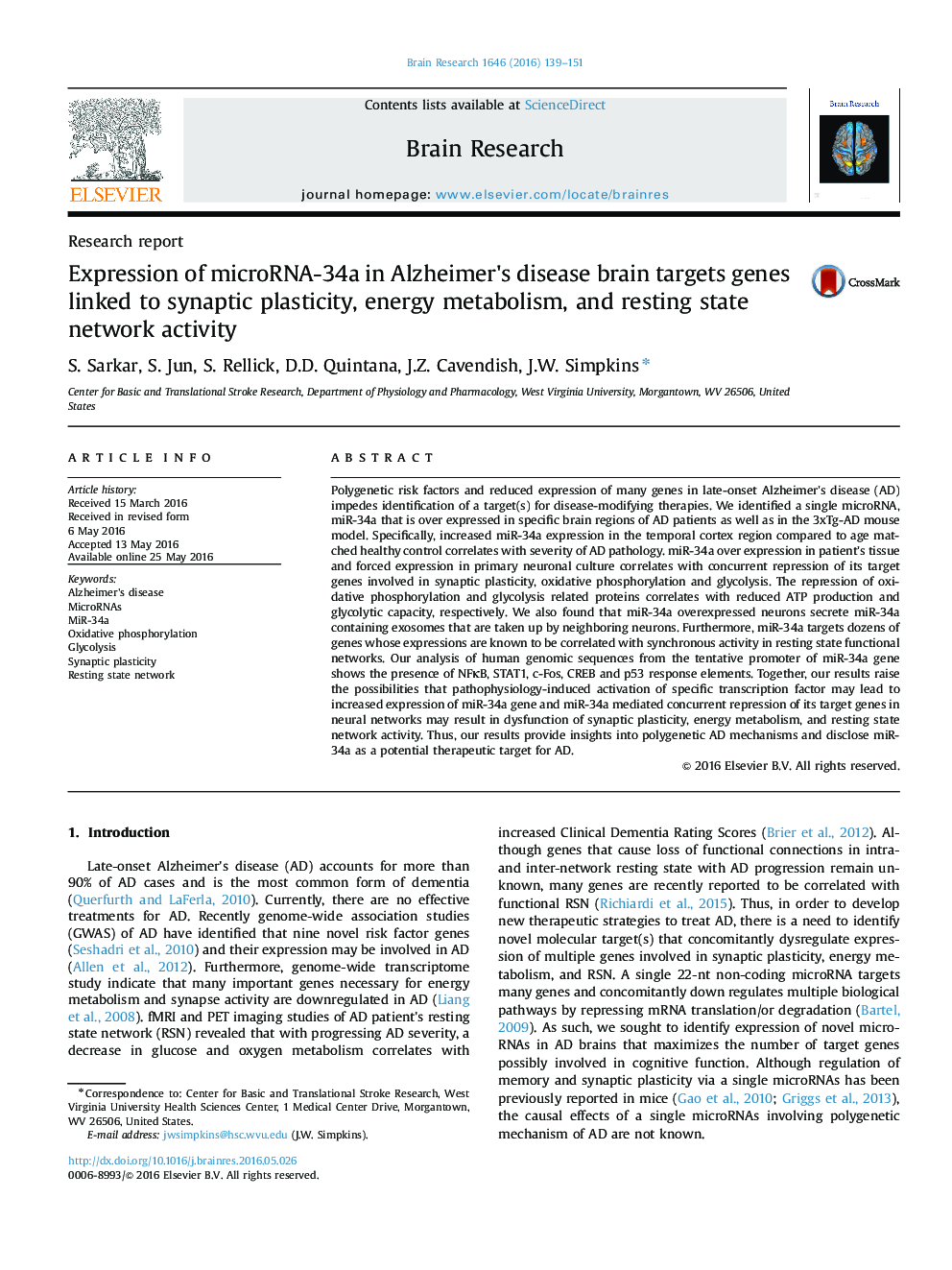| کد مقاله | کد نشریه | سال انتشار | مقاله انگلیسی | نسخه تمام متن |
|---|---|---|---|---|
| 6262416 | 1613796 | 2016 | 13 صفحه PDF | دانلود رایگان |

- Cognitive impairment in sporadic Alzheimer's disease (AD) arises due to polygenic dysfunction.
- The potential for a single miRNA linking synaptic dysfunction and altered bioenergetics is explored.
- Five miRNAs were selected by bioinformatics that maximizes their polygenic targets involved in AD.
- miR-34a in AD brains and primary neurons repressed proteins related to synaptic plasticity and energy metabolism.
- Identifying polygenic targets discloses miR-34a as a potential therapeutic target for AD.
Polygenetic risk factors and reduced expression of many genes in late-onset Alzheimer's disease (AD) impedes identification of a target(s) for disease-modifying therapies. We identified a single microRNA, miR-34a that is over expressed in specific brain regions of AD patients as well as in the 3xTg-AD mouse model. Specifically, increased miR-34a expression in the temporal cortex region compared to age matched healthy control correlates with severity of AD pathology. miR-34a over expression in patient's tissue and forced expression in primary neuronal culture correlates with concurrent repression of its target genes involved in synaptic plasticity, oxidative phosphorylation and glycolysis. The repression of oxidative phosphorylation and glycolysis related proteins correlates with reduced ATP production and glycolytic capacity, respectively. We also found that miR-34a overexpressed neurons secrete miR-34a containing exosomes that are taken up by neighboring neurons. Furthermore, miR-34a targets dozens of genes whose expressions are known to be correlated with synchronous activity in resting state functional networks. Our analysis of human genomic sequences from the tentative promoter of miR-34a gene shows the presence of NFκB, STAT1, c-Fos, CREB and p53 response elements. Together, our results raise the possibilities that pathophysiology-induced activation of specific transcription factor may lead to increased expression of miR-34a gene and miR-34a mediated concurrent repression of its target genes in neural networks may result in dysfunction of synaptic plasticity, energy metabolism, and resting state network activity. Thus, our results provide insights into polygenetic AD mechanisms and disclose miR-34a as a potential therapeutic target for AD.
Journal: Brain Research - Volume 1646, 1 September 2016, Pages 139-151